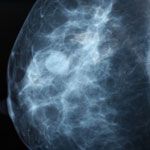 Want to reduce your risk of breast cancer? Be informed, be alert and – if you’re over 50 – get screened.
Want to reduce your risk of breast cancer? Be informed, be alert and – if you’re over 50 – get screened.
Breast cancer is the most common cancer in women over the age of 50, affecting one in 11 Australian women.
Breast cancer is also the most common cancer experienced by Aboriginal and Torres Strait Islander women. While rates of breast cancer are lower in Indigenous women than in non-Indigenous women, the death rate from breast cancer is higher in the Indigenous population.
What causes breast cancer?
The exact cause of breast cancer is unknown. However, there are a number of things that appear to increase the risk of developing it. These include:
- Being a woman – men do get breast cancer, but this is pretty rare
- Getting older – age is the biggest risk factor in developing breast cancer. Around 75 per cent of all breast cancers occur in women over the age of 50.
- Family history – if your family members have had breast cancer, you are more likely to develop it
- Having kids late – not having children or having kids after the age of 30 appears to increase the risk
- Alcohol – drinking too much grog increases your risk of breast cancer
- Weight – being obese or gaining a lot of weight after menopause increses your risk
- Medication – the contraceptive pill and hormone replacement therapy (HRT) increase your risk, but the risk goes away after you’ve stopped taking it for a while.
Remember: Having some of these risk factors doesn’t mean you’ll get breast cancer. Lots more research needs to be done before doctors fully understand why women get breast cancer – a lot of women who get it have no known risk factors.
Be Aware
There’s a lot you can do to ensure your own breast health. One of the best ways to do this is to check your breasts regularly for any changes.
While there’s no exact formula for checking your breasts, the National Breast and Ovarian Cancer Centre recommends you familiarise yourself with the look and feel of your breasts and check them regularly by doing the following:
Look at your breasts and nipples in the mirror and check for:
- a change in the size or shape of your breast or nipple
- a change in the skin over your breast such as redness or dimpling
- a nipple discharge
Feel your breasts, remembering to feel up to your collarbone, below your bra-line and under your armpit and check for:
- a new lump or lumpiness, especially if it’s only in one breast
If you notice anything different or unusual, see your doctor straight away. You should also see your doctor any unusual persistent pain, especially if it is in one breast.
Remember: Breasts undergo many changes in a woman’s life – puberty, your periods, pregnancy, breastfeeding, changes in weight or getting older. Nine out of 10 breast changes are not breast cancer. But any unusual breast change should be checked by a doctor, just to be sure.
Over 50? Get a mammogram.
Most breast cancer cases occur in women who are aged over 50. If you’re aged 50 or over, it’s recommended you get regular mammograms.
Mammograms are X-rays of the breast. They are used to look for signs of breast cancer. You are entitled to free mammograms through BreastScreen Australia.
BreastScreen Australia offers free screening mammograms every two years for women aged 40 years and over.
You should be aware that mammograms are not as effective for women in the 40-49 year age group as they are for older women because your breasts are denser than they are in older women.
BreastScreen Australia services are provided in a wide range of centres, including mobile units (vans) in some areas. To make an appointment for a screening mammogram, call BreastScreen Australia on 13 20 50 for the cost of a local call anywhere in Australia.
For more information, head to www.breasthealth.com.au
Comments are closed.